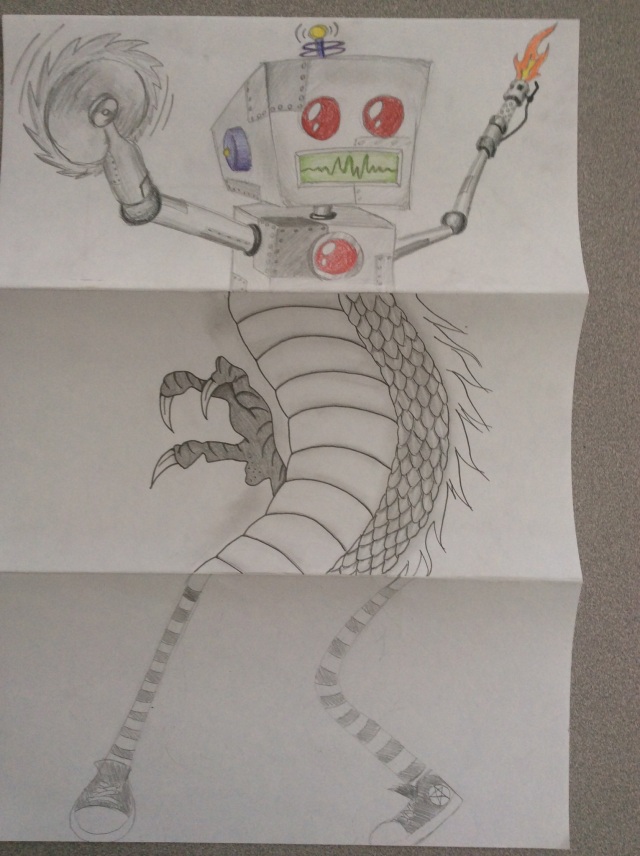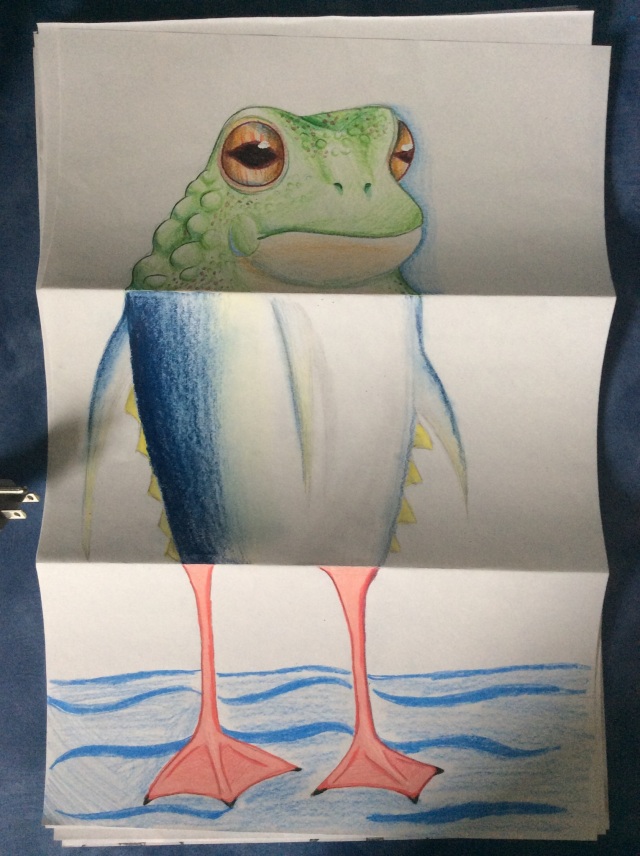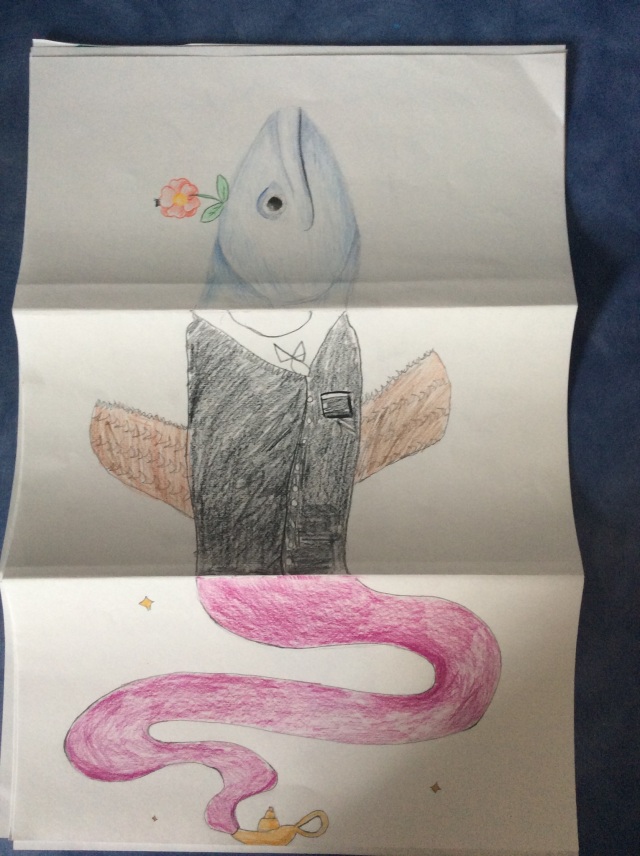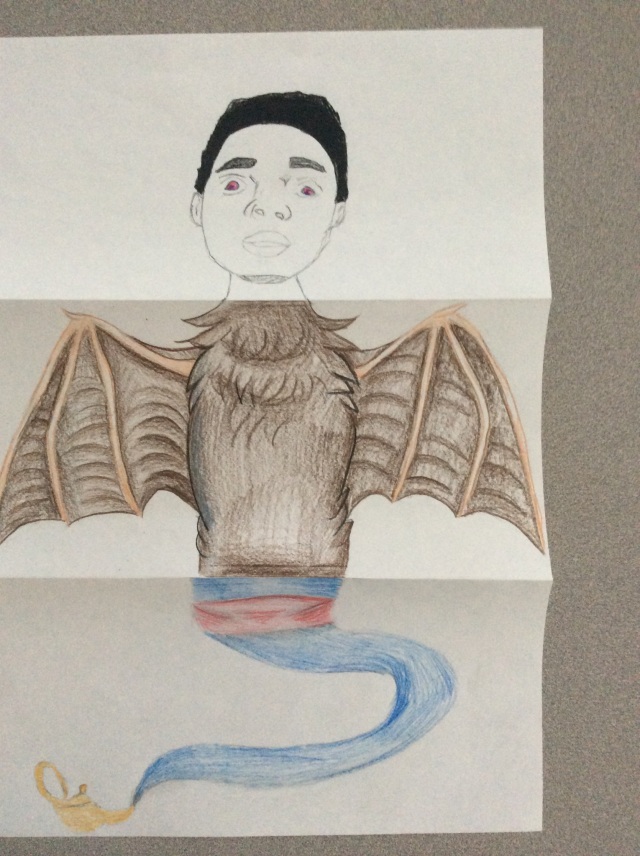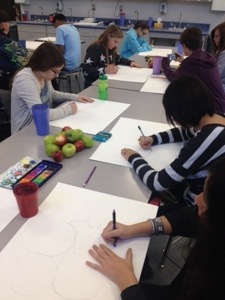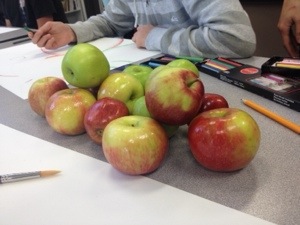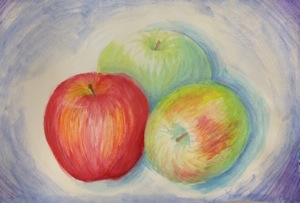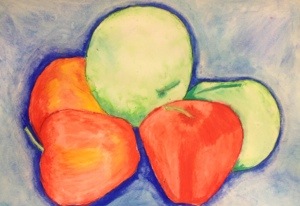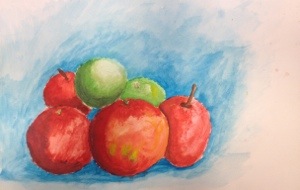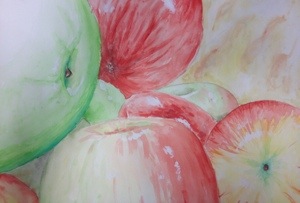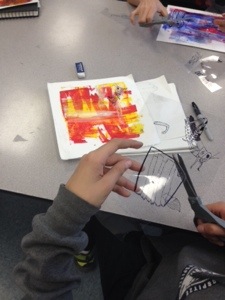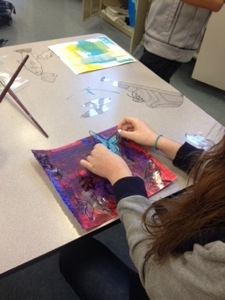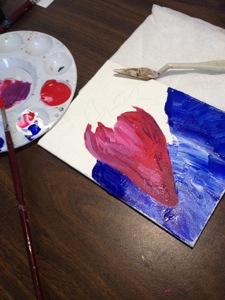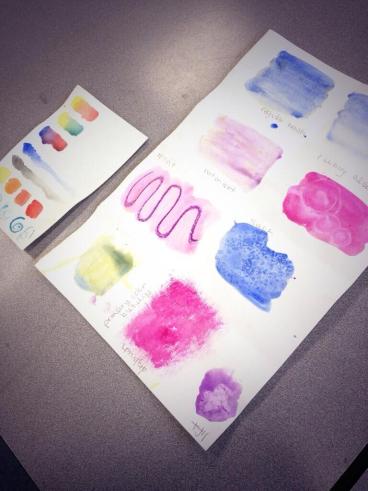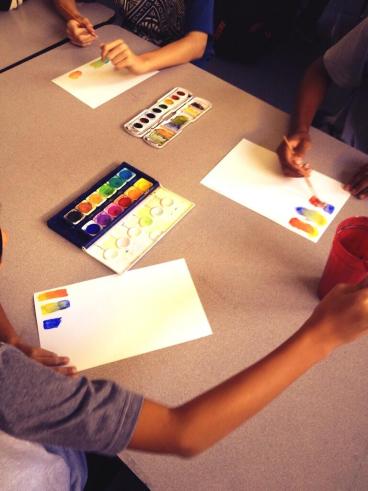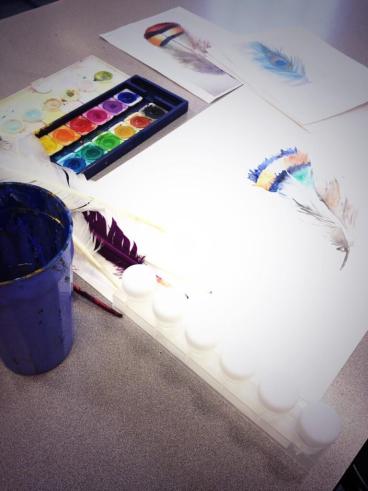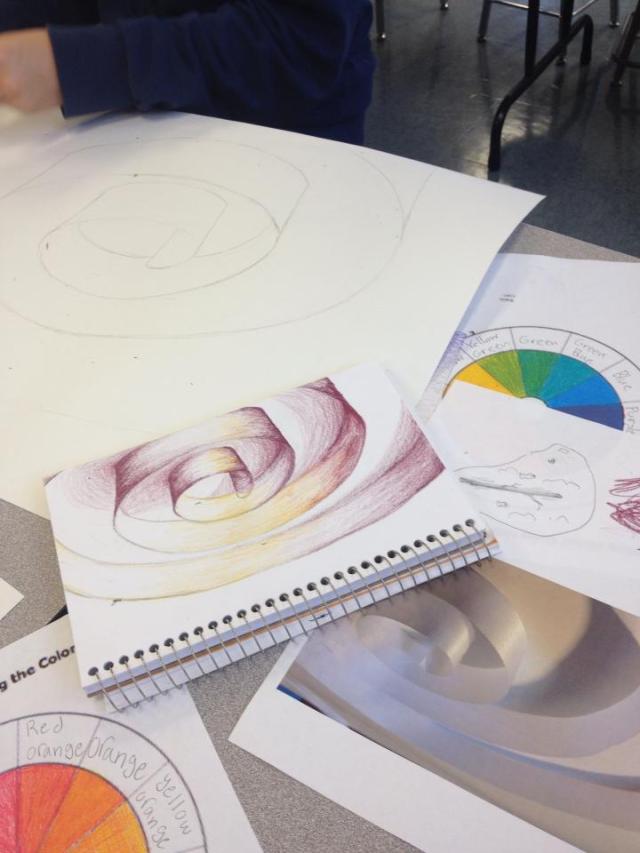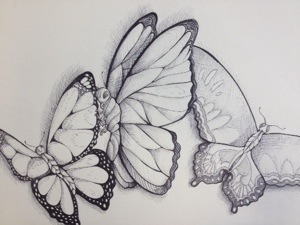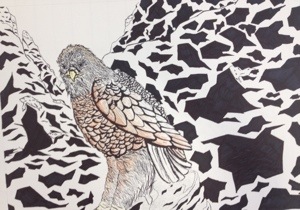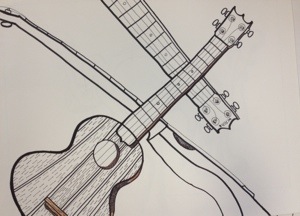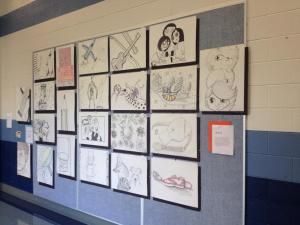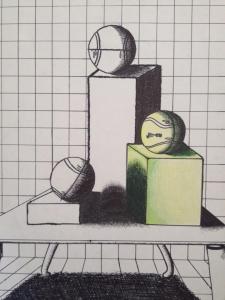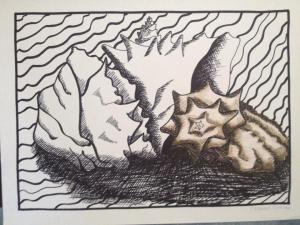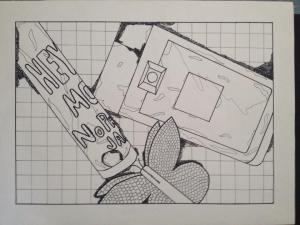I always love watching the student’s excitement with it comes to the unveiling of the “Exquiste Corpse” project. In my first drawing class in college, we did this as a warm up activity.
Step 1: fold your paper I two thirds
Step 2: each student draws a head of any kind of creature in the top portion. It does not have to even be a living thing. The more create, the better turn out.
Step 3: each student must extend where their neck ends into the next section so that when you fold it, the head is hidden and all that remains in the middle section is two lines at the top. This helps students to know where to connect the torso and not see anything on the head portion. It’s very important to do this!
Step 4: shuffle all papers and fold them so all they see is the middle portion. Remind them constantly not to peek. (one still will) Have the students create any kind of torso imaginable. Make sure they then extend where the torso ends in the torso ends in the next section.
Step 5: Reshuffle and retold. Pass out and have student draw any kind of legs. One of my favorite turn outs was a student who drew a lamp with a genie tail coming out. It’s amazing what these kids come up with!
Last: unveil the masterpieces!
About Me
Follow me on Twitter
My TweetsCategories
- Follow Mrs. Guzman's Art Room on WordPress.com
-

